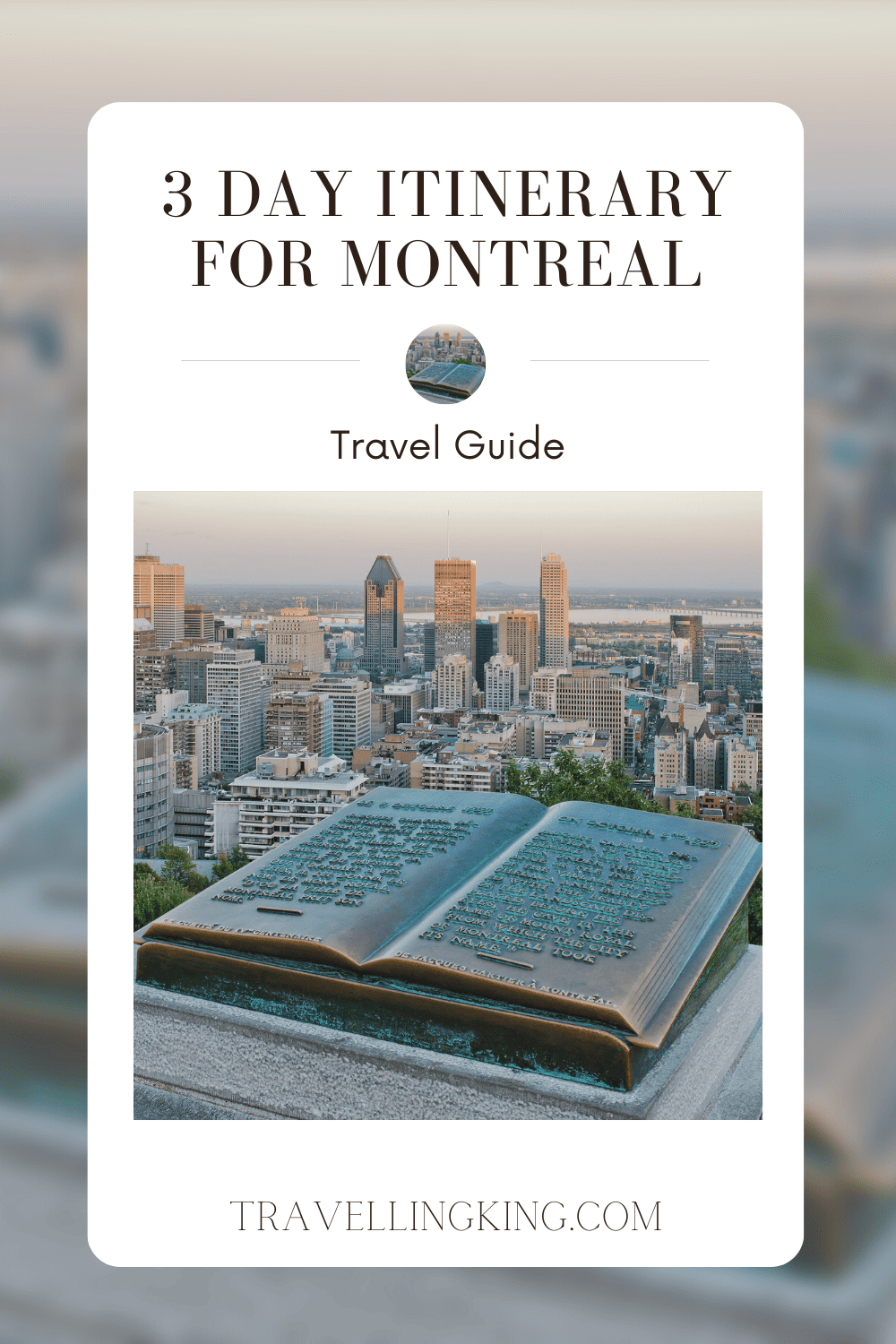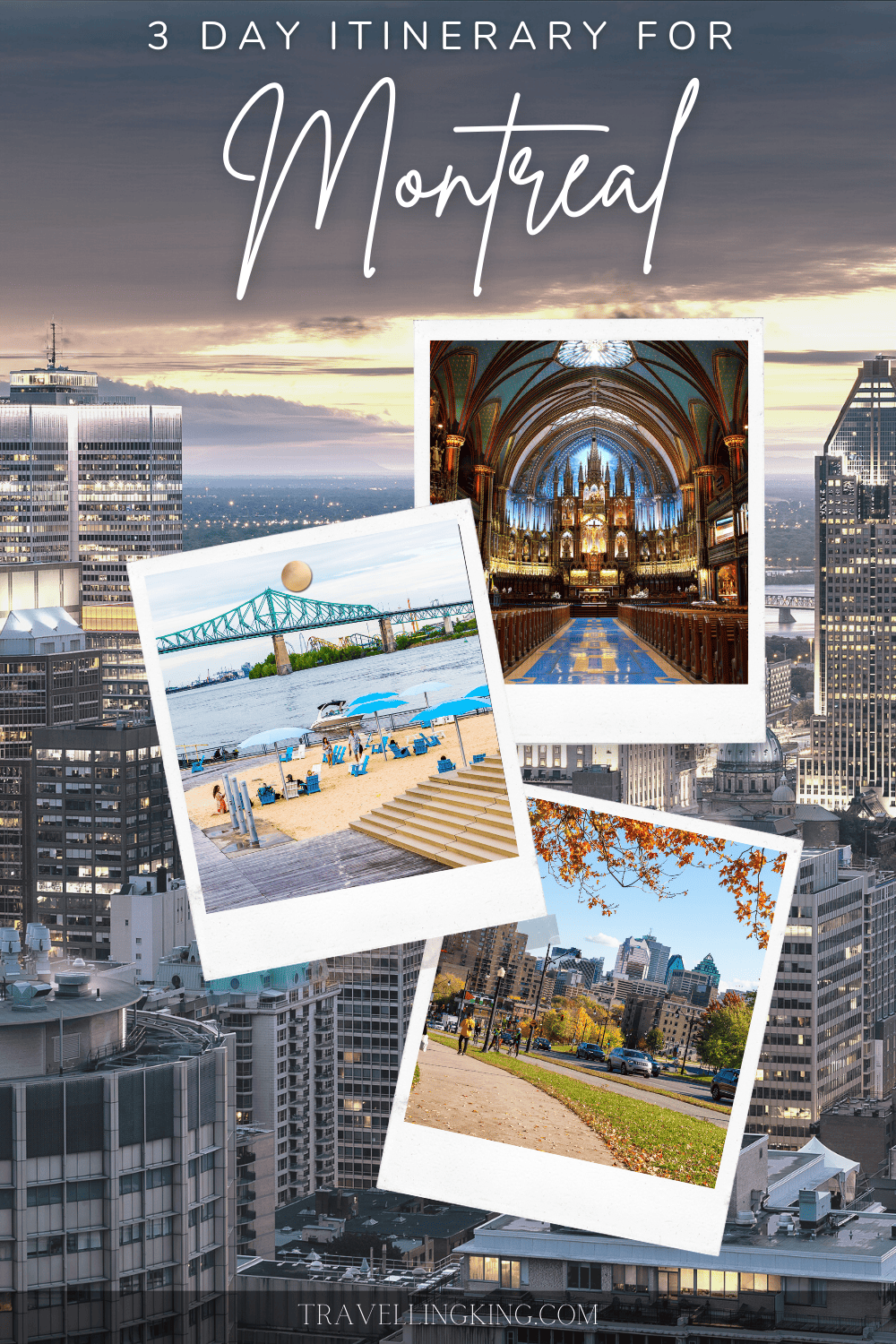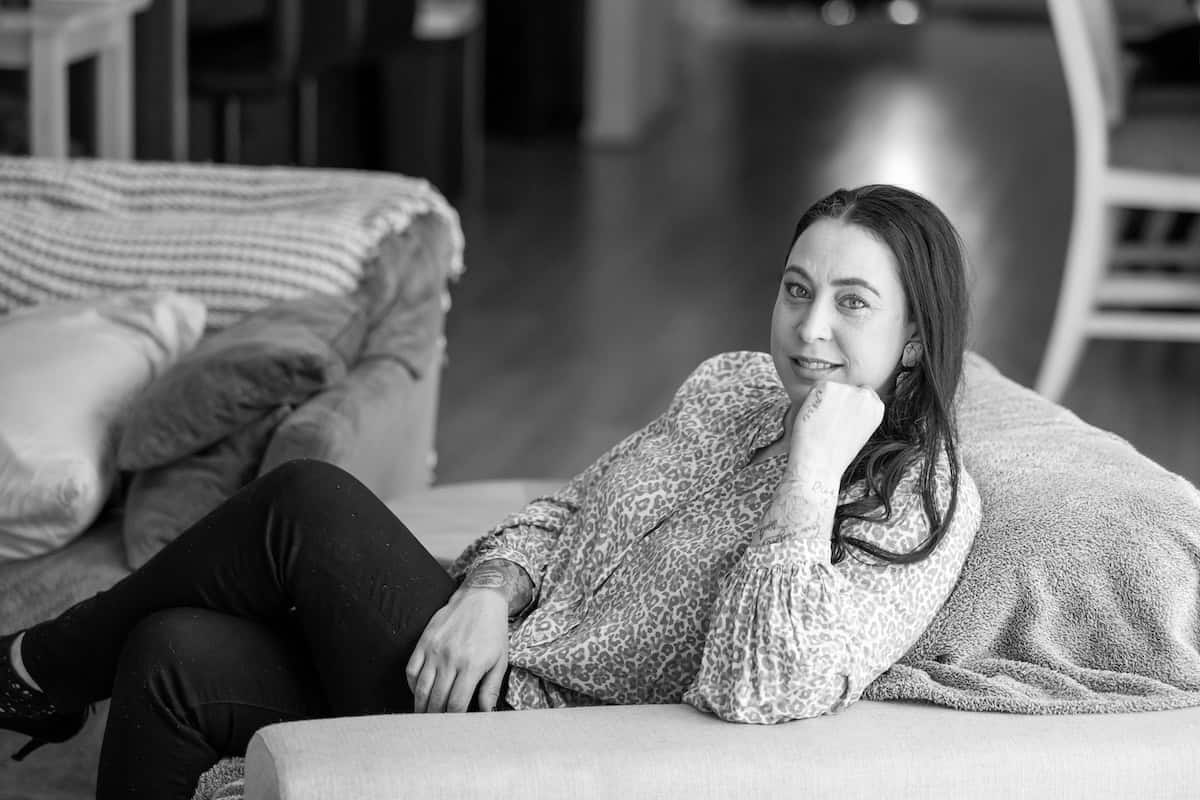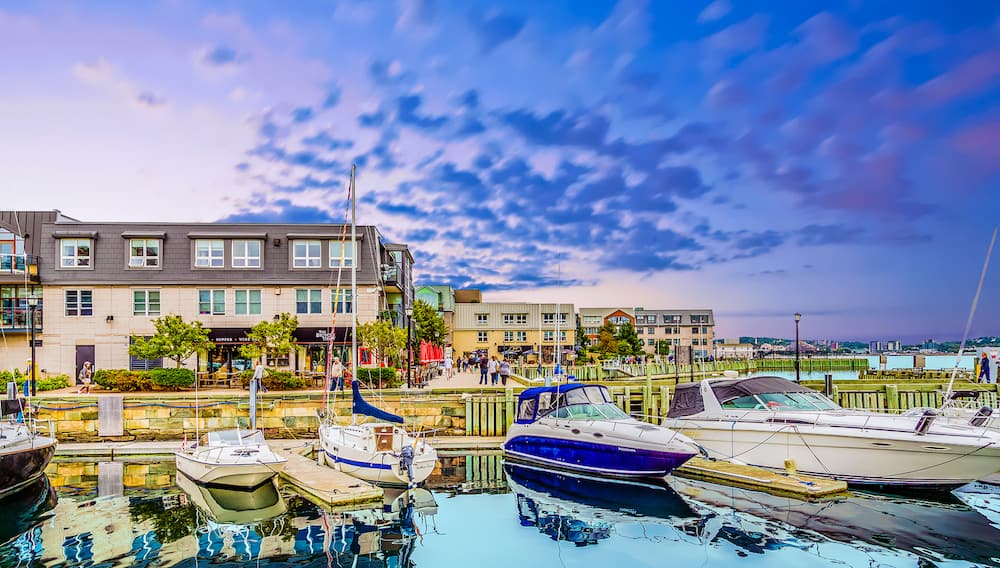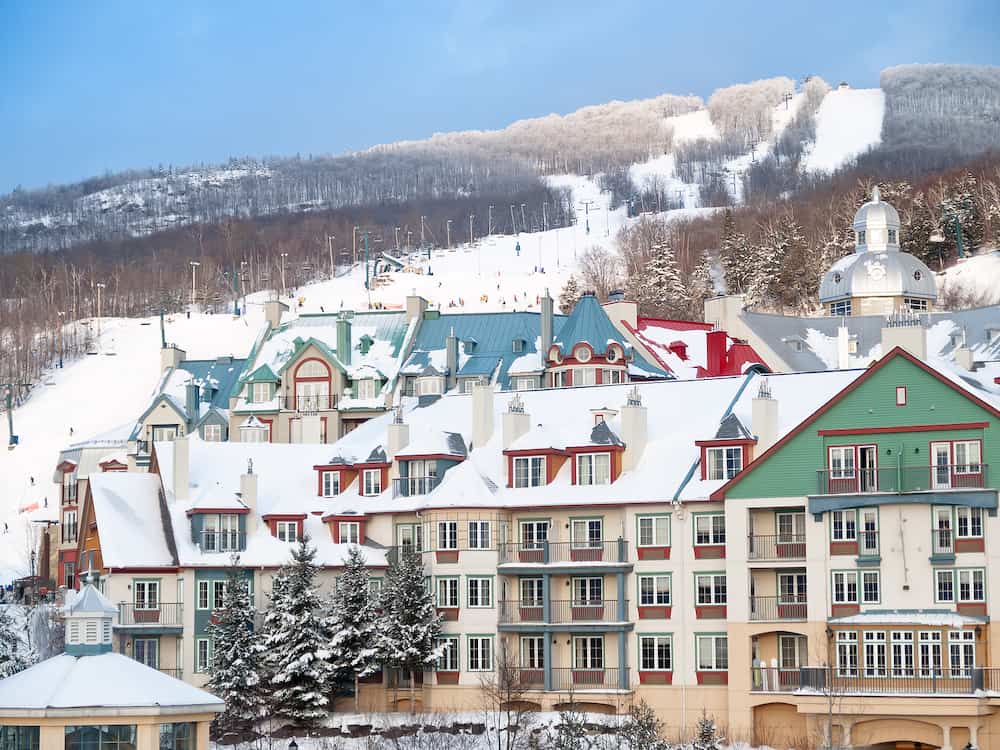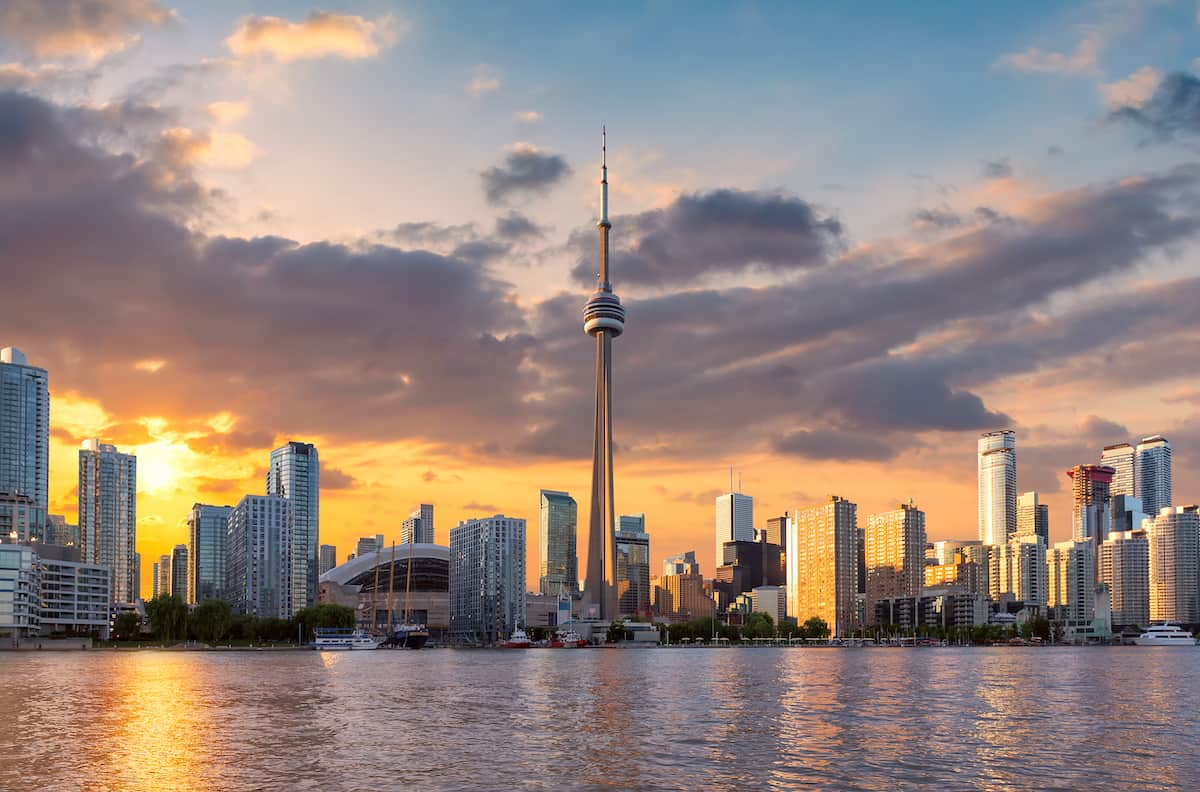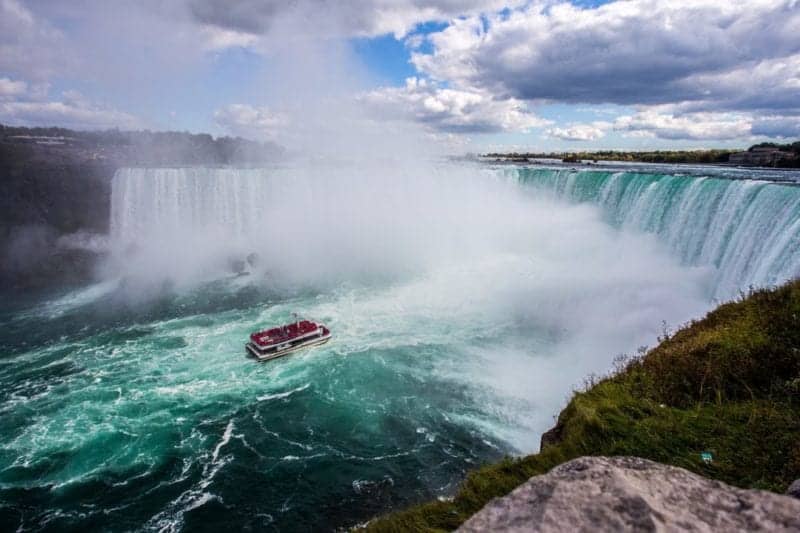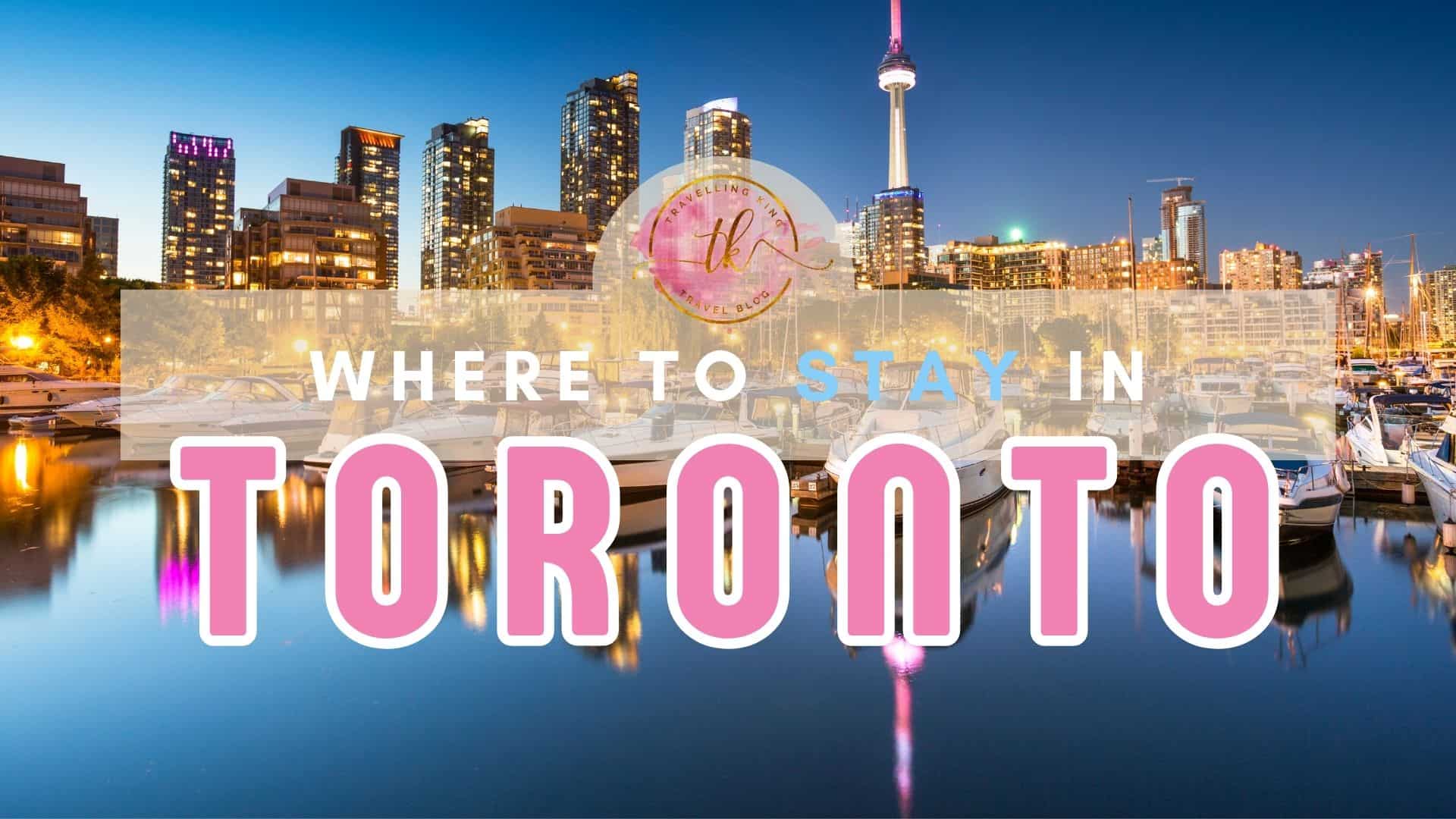3 Day Itinerary for Montreal
If you daydream about marshmallow hot chocolate, sweater weather, cozy fire-lit restaurants and snow ball fights, then Montreal should be on your winter holiday list.
Situated in the Canadian province of Quebec, Montreal is the largest city in the province and the second-largest in Canada. Known as the cultural capital of Canada, this cosmopolitan metropolis is renowned for its unique blend of European charm and North American energy.

Picture this… French toast, smothered in canadian, maple bacon – The perfect morning brekkie of salty and sweet. That’s what it’s like visiting Montreal, a lil bit of both.
Summer (June to August) is a popular time to visit Montreal due to its pleasant weather and a myriad of outdoor festivals and events. The city comes alive with street performers, lively terraces, and cultural celebrations like the Montreal International Jazz Festival and Just for Laughs Comedy Festival.
The parks and gardens are in full bloom, and you can enjoy outdoor activities such as cycling, picnicking, and exploring the city’s numerous green spaces.
Fall (September to November) in Montreal is known for its vibrant foliage as the leaves turn into beautiful hues of red, orange, and gold. The weather is mild, making it a great time to explore the city on foot.
Fall also brings cultural events like the Montreal International Film Festival and a variety of art exhibitions. It’s an ideal time for food lovers to indulge in the city’s culinary scene, including harvest-inspired dishes.
Winter (December to February) in Montreal is a magical time, especially if you enjoy winter activities. The city transforms into a winter wonderland with snow-covered streets and festive decorations.
The highlight of the season is the Montreal High Lights Festival, featuring ice sculptures, light installations, and various outdoor activities. You can also experience outdoor ice skating, go sledding in parks, or explore the Underground City, a vast network of interconnected tunnels and shopping centers.

Old Montreal (Vieux-Montreal) is known for its charming cobblestone streets and historic buildings, Old Montreal is the city’s most picturesque neighborhood. It offers a range of boutique hotels, luxury accommodations, and charming bed and breakfasts.
Staying here puts you in close proximity to popular attractions such as Notre-Dame Basilica, Place Jacques-Cartier, and the Old Port of Montreal. You’ll also find excellent dining options and a lively nightlife scene.
Downtown Montreal is a bustling hub of activity and a great choice if you want to be in the heart of the city. It offers a wide range of hotels, from luxury chains to budget-friendly options.
Staying in downtown Montreal gives you easy access to popular shopping destinations like Sainte-Catherine Street, cultural institutions such as the Montreal Museum of Fine Arts, and entertainment venues like the Bell Centre, where you can catch concerts and hockey games.
Plateau-Mont-Royal is a hip and artistic neighborhood beloved by locals and visitors. It’s known for its colorful row houses, pumping atmosphere, and artistic vibe. Plateau-Mont-Royal offers a mix of boutique hotels, charming guesthouses, and Airbnb rentals.
The area is filled with trendy shops, independent boutiques, art galleries, and an array of restaurants and cafes. Mont-Royal Park is also within walking distance, offering beautiful views of the city.
Adjacent to Plateau-Mont-Royal, Mile End is a dynamic neighborhood known for its cultural community, indie music scene, and unique shops. It’s a great area to immerse yourself in Montreal’s creative atmosphere.
The neighborhood offers boutique hotels, bed and breakfasts, and Airbnb rentals. Mile End is famous for its bagel shops, charming cafes, and vibrant street art. You’ll find plenty of local boutiques, vintage stores, and fantastic dining options here.
Located just southwest of downtown, Griffintown has transformed from an industrial area into a trendy and up-and-coming neighborhood. It offers a mix of boutique hotels and modern apartment rentals.
Griffintown features a blend of historic buildings and modern developments, with restaurants, cocktail bars, and chic boutiques. It’s a great choice if you prefer a more contemporary atmosphere and want to explore Montreal’s growing food and nightlife scene.
If you’re wondering how many days in Montreal is ideal or how many days do you need in Montreal? Well it all depends on what your plans are? You could easily spend a few weeks or even months in Montreal and still not see or do everything.
Below is a great guide on what to do in Montreal for 3 days because sometimes 3 days in Montreal is all you have, especially if you’re spending a weekend in Montreal or you’re travelling to Montreal on short stop over trip and want to be able to tour some of the main areas within Montreal.
Plan your trip
Save on fees abroad with the Wise Card—use it at ATMs, restaurants, and for flights or hotels in over 150 countries. Manage 40+ currencies in real-time with the Wise app.
Need Help Planning?
- Cheap Flights: Find the best deals.
- Accommodation: From hostels to luxury stays.
- Car Rental: Affordable options worldwide.
- Sightseeing Tours: Explore without breaking the bank.
- Travel Adapter: One adapter for all your needs.
- Travel Insurance: Don’t risk it—stay covered.
This post includes affiliate links. Read my full disclosure and content policy.
Overview Of 3 Days In Montreal Itinerary
Day 1 in Montreal
- Notre Dame Basilica
- Place Jacques Cartier
- Mont Royal
- Old Montreal
Day 2 in Montreal
- Plateau Mont
- Old Port
- Street Art
- Downtown Montreal
Day 3 in Montreal
- Jean-Talon Market
- Montreal Museum
- The Underground City
- The Lachine Canal
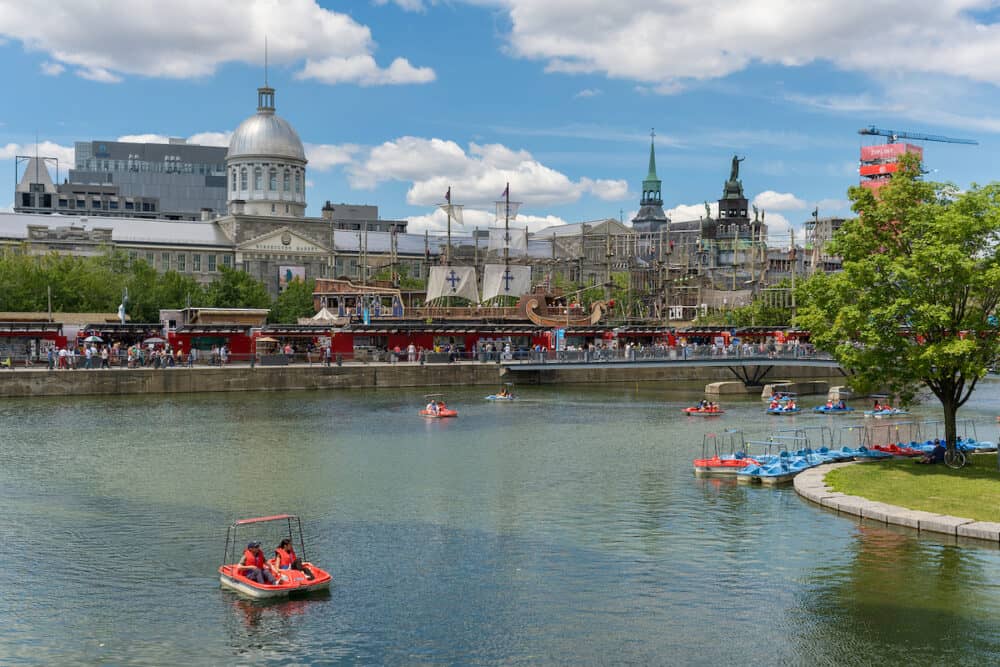
Day 1 in Montreal
Notre Dame Basilica
Start off your Montreal tour with some history and a quick trip to Paris. Notre-Dame Basilica is one of the most iconic and revered landmarks in Montreal. The Notre-Dame Basilica is a masterpiece of Gothic Revival architecture.
It was designed by Irish-American architect James O’Donnell and constructed between 1824 and 1829. The basilica’s exterior features intricate stone carvings, gargoyles, and imposing towers, while its interior showcases a stunning combination of colors, patterns, and detailed craftsmanship.
This is also where the Canandians draw on their French heritage and counterpart from Paris. Although, you might’ve already picked that up.
The basilica holds great historical importance for Montreal. It was here that the city’s first parish church, dating back to 1672, once stood. The current structure was built to accommodate Montreal’s growing Catholic population in the 19th century and has since become a symbol of the city’s religious and cultural identity.
In recent years, the Notre-Dame Basilica has gained further popularity through its renowned Aura light and sound show. This immersive multimedia experience combines lighting effects, music, and projections to enhance the basilica’s beauty and bring its history to life.
The show highlights the architectural details and religious art while narrating the story of Montreal and the basilica itself.
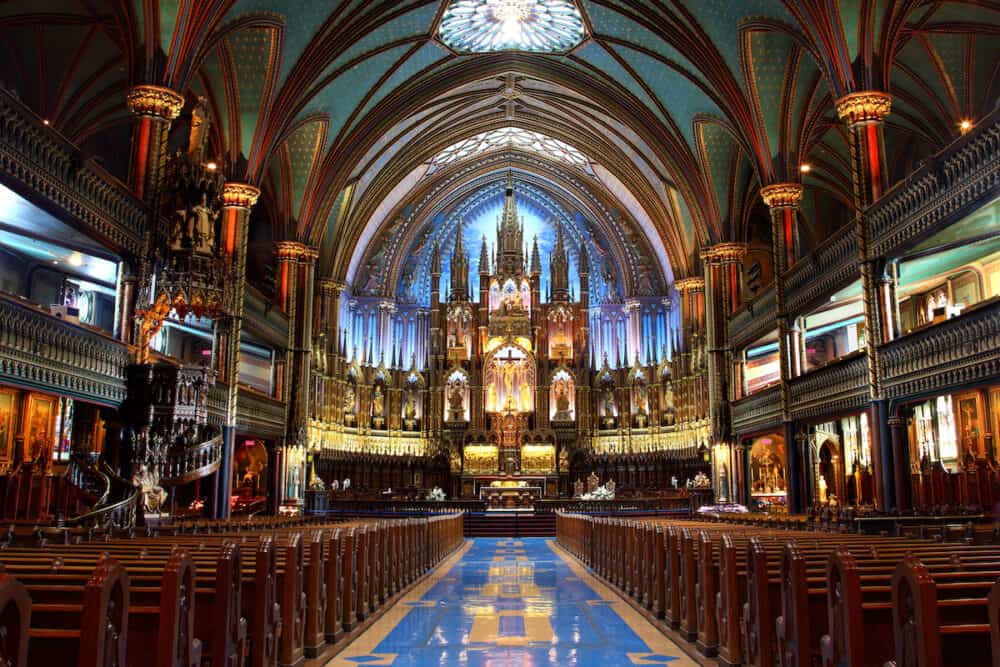
Place Jacques Cartier
Switching spires for squares, you’ll head to Place Jacques-Cartier, a public square located in the heart of Old Montreal, near the Old Port. Named after the famous French explorer Jacques Cartier, this square is a popular gathering place for both locals and visitors.
Place Jacques-Cartier holds significant historical value in Montreal. It was originally established as a marketplace in the 19th century and has since played a central role in the city’s commercial and social life. The square has witnessed numerous important events throughout Montreal’s history and continues to be a hub of activity.
The square is lined with charming buildings, many of which date back to the 18th and 19th centuries. The architecture reflects a mix of styles, including French colonial, Victorian, and neoclassical influences.
The facades feature colorful storefronts, outdoor terraces, and wrought-iron balconies, adding to the square’s picturesque ambiance. It’s truly a magical experience.
Place Jacques-Cartier is renowned for its outdoor dining scene. The square is lined with numerous restaurants, cafes, and bistros offering a variety of cuisines.
During the warmer months, the outdoor terraces come alive with people enjoying al fresco meals, sipping coffee, and soaking up the lively atmosphere. Street performers, musicians, and artists often entertain passersby, adding to the vibrant ambiance. A slice of Europe in America.
Place Jacques-Cartier serves as a venue for festivals and events throughout the year. During the summer, the square hosts various cultural festivals, outdoor concerts, and street performances. The Christmas season brings festive decorations and a lively holiday market, creating a warm atmosphere.
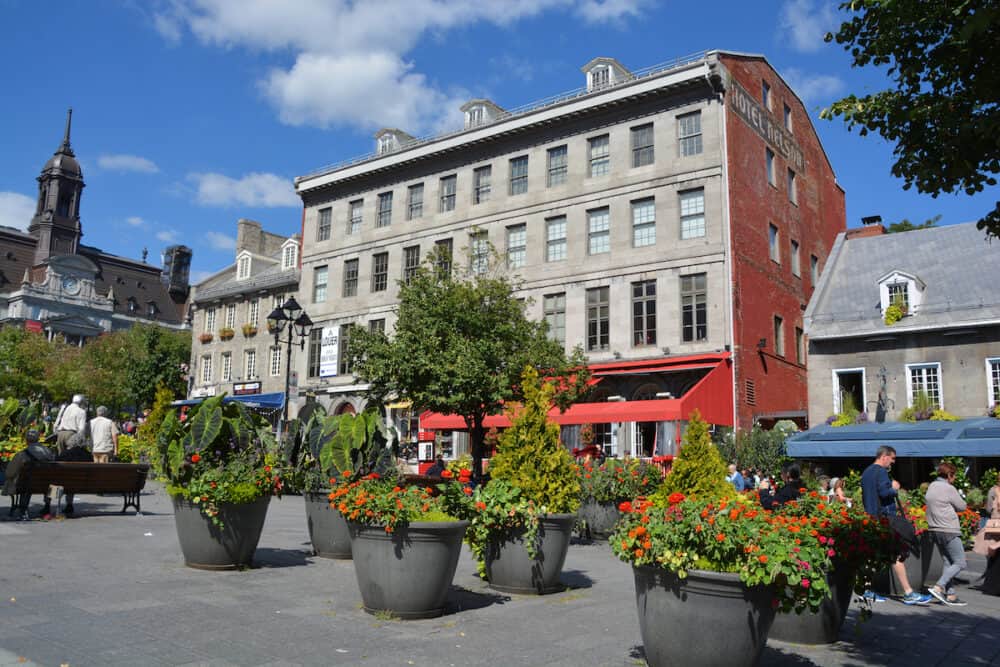
Mont Royal
Trade the city air for the forest by making your way to Mont Royal for the afternoon. Mont or Mount Royal, is a prominent landmark and urban park located in the heart of Montreal.
Rising approximately 233 meters (764 feet) above sea level, it offers breathtaking views of the city skyline and is a cherished natural oasis.
Mont Royal Park is a beloved destination for outdoor activities and recreational pursuits. The park features a vast network of hiking trails, allowing visitors to explore the mountain at their own pace.
In warmer months, the park is popular for jogging, cycling, picnicking, and leisurely walks. In winter, it transforms into a winter wonderland, offering opportunities for cross-country skiing, snowshoeing, and tobogganing. No matter the season, it astounds.
Mont Royal boasts several iconic viewpoints and landmarks that offer panoramic views of Montreal. The most notable is the Kondiaronk Belvedere, which provides a stunning vista of the city’s skyline, the Saint Lawrence River, and the surrounding countryside.
Other landmarks include the Sir George-Étienne Cartier Monument and the Beaver Lake (Lac des Castors), where you can rent paddle boats during the summer and ice skate in the winter.
Mont Royal holds historical and cultural significance for Montreal. The mountain and park were designed by Frederick Law Olmsted, the renowned landscape architect who also designed New York City’s Central Park.
Mont Royal Park was officially inaugurated in 1876 and has since become an integral part of Montreal’s identity and heritage. The park has been the site of various historical events and gatherings throughout the years. If you could meet one historian from the past, who would it be?
One of the most popular events is the Tam-Tams, a weekly gathering where people gather to drum, dance, and enjoy the outdoors. The park also hosts cultural festivals, concerts, and open-air performances during the summer months.
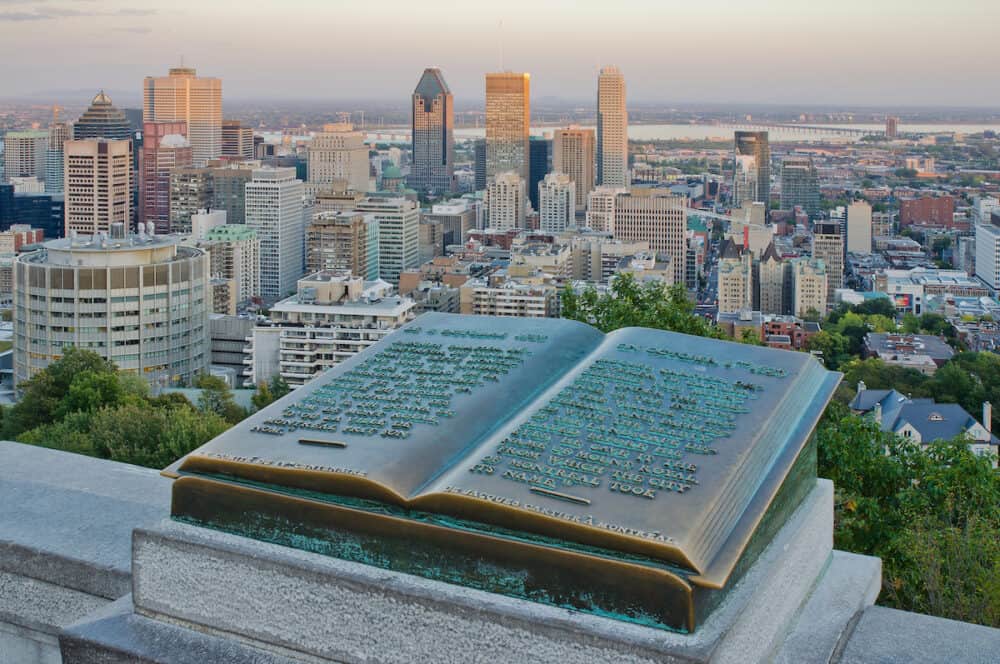
Old Montreal
Finish off the afternoon in historical style by making your way to Old Montreal, also known as Vieux-Montreal. It is the historic district of the city and one of its most intriguing sites. Old Montreal is the birthplace of the city, where Montreal was founded in 1642.
The neighborhood showcases centuries of history and is home to some of the oldest buildings in Montreal. Walking through its streets feels like stepping back in time, with well-preserved architecture and landmarks that tell the story of the city’s evolution.
Old Montreal is renowned for its stunning architecture, blending various styles including French colonial, Victorian, and neoclassical.
The district is characterized by its iconic stone buildings, ornate facades, and squares. Notable landmarks include the Notre-Dame Basilica, Bonsecours Market, Montreal City Hall (Hôtel de Ville), Place Jacques-Cartier, and the Old Port of Montreal.
Old Montreal’s cobblestone streets, narrow alleyways, and horse-drawn carriages create a romantic ambiance. The district is filled with boutiques, art galleries, cafes, and restaurants housed in historic buildings. Take your time to explore this piece of Montreal’s beautiful history.
Old Montreal is home to several museums and cultural institutions that offer insights into Montreal’s history and culture.
The Pointe-à-Callière Museum, located near the Old Port, is a must-visit, showcasing the city’s archaeology and heritage. Other notable institutions include the Montreal History Centre, the Centre d’histoire de Montréal, and the Château Ramezay Museum.
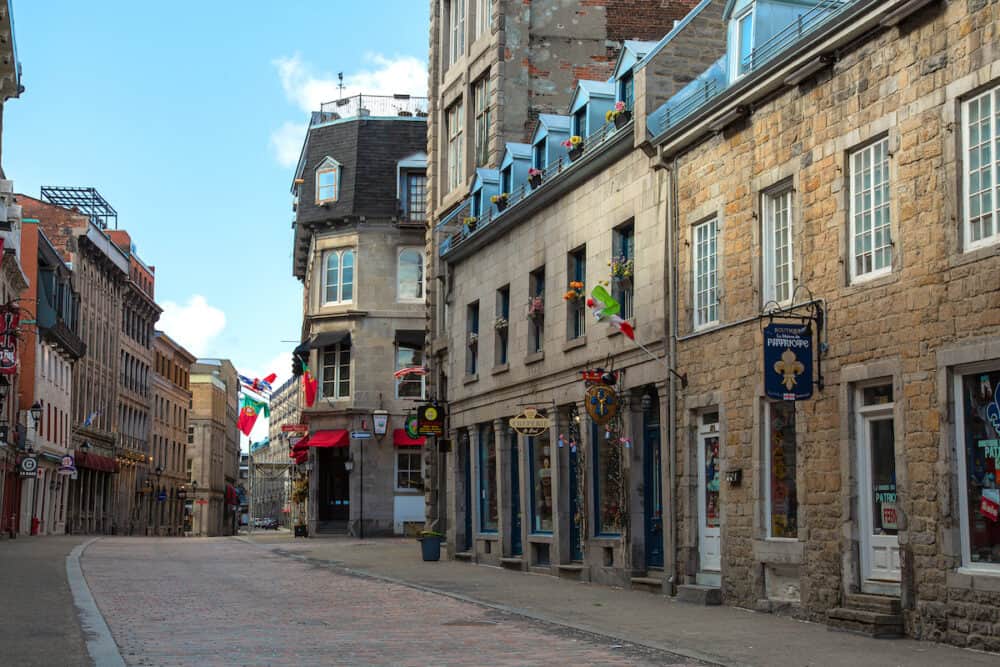
Day 2 in Montreal
Plateau Mont
Today you’ll start off your day at Plateau Mont to grab a traditional, Montreal breakfast before exploring this fascinating escarpment. This is what travel is all about… Starting off the day early and letting a place lead you into wonderful uncertainty.
The Plateau-Mont-Royal, often referred to simply as the Plateau, is an eclectic neighborhood in Montreal. Known for its bohemian atmosphere, artistic character, and lively streets, the Plateau is a beloved destination for locals and visitors.
The neighborhood is home to numerous art galleries, independent theaters, music venues, and performance spaces. Artists and creatives are drawn to the area’s unique energy, making it a hub for artistic expression and creativity.
The Plateau-Mont-Royal is characterized by its distinct architectural style. Rows of colorful Victorian houses, known as “plexes,” line the residential streets, creating a picturesque and charming ambiance.
These historic buildings, with their ornate details, wrought-iron staircases, and front porches, contribute to the neighborhood’s unique character and visual appeal. Anyone else getting The Notebook vibes?
The Plateau-Mont-Royal is a shopper’s paradise, with a multitude of unique boutiques, vintage stores, and local designer shops.
The area is known for its independent fashion boutiques, artisanal goods, and quirky shops selling everything from vintage clothing to handmade crafts. Strolling along the main commercial streets, such as Saint-Denis and Saint-Laurent, provides a delightful shopping experience.
The Plateau-Mont-Royal is a haven for food lovers, offering a diverse array of dining options. The neighborhood is known for its upbeat restaurants, cozy cafes, and traditional bistros. Here is a list of awesome Canadian food to try.
You can explore a wide range of international cuisines, from French and Italian to Middle Eastern and Asian. The area is also famous for its bagel shops, poutine joints, and lively brunch spots. Speaking of brunch, you’re right on time!
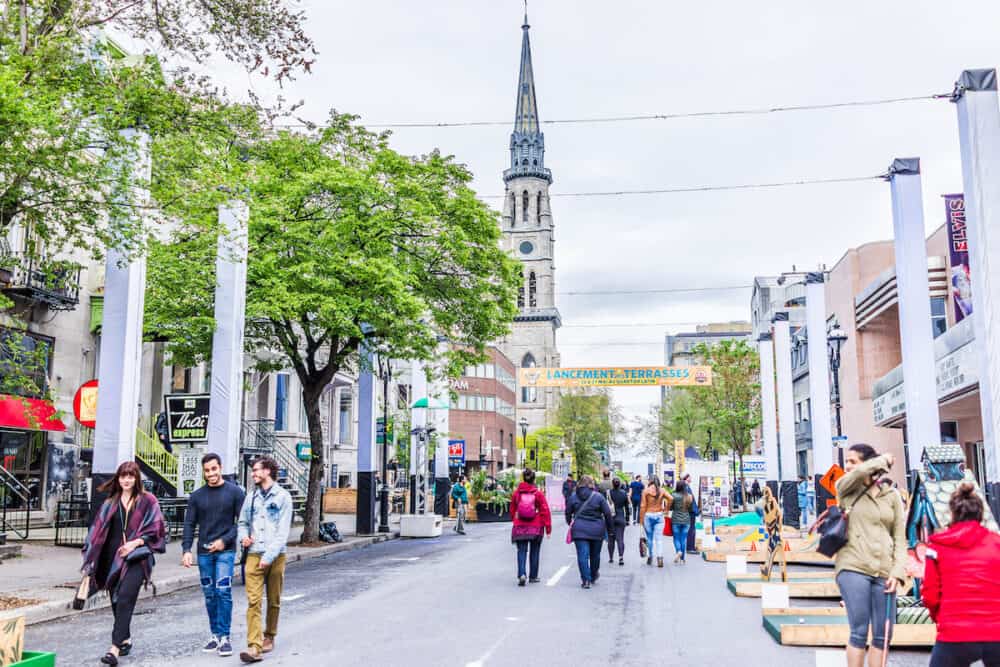
Old Port
After brunch, you’ll head to the Old Port to continue your soothing exploration of this part of Montreal. The Old Port of Montreal, or Vieux-Port de Montréal, is a historic waterfront district that has been transformed into a vibrant cultural, recreational, and entertainment hub.
Located along the Saint Lawrence River, the Old Port offers a mix of historical charm, modern attractions, and breathtaking views.
The Old Port holds a significant place in Montreal’s history as the city’s original port. It served as a bustling trading hub and gateway to the city during the 19th and early 20th centuries.
Many of the buildings and structures in the Old Port have been preserved or restored, showcasing the area’s rich maritime heritage. Imagine how many ships have passed through the port since then…
The Old Port features a network of quays, promenades, and waterfront spaces that are perfect for leisurely walks, cycling, or simply enjoying the views.
The Jacques-Cartier Quay is a popular gathering place, lined with outdoor terraces, cafes, and shops. The Promenade du Vieux-Port offers picturesque views of the river and the city skyline, providing a peaceful escape from the urban hustle.
The Old Port hosts various festivals and events throughout the year. The Montreal International Fireworks Competition, known as the International des Feux Loto-Québec, takes place in the summer, offering spectacular fireworks displays.
The Old Port also hosts outdoor concerts, cultural festivals, food markets, and art exhibitions.
The Montreal Science Centre is a major attraction within the Old Port. This interactive science museum features engaging exhibitions, educational programs, and immersive experiences for visitors of all ages.
It showcases topics ranging from technology and space exploration to environmental science and human health. You really are learning about absolutely everything today.
The Clock Tower (Tour de l’Horloge) is a prominent landmark in the Old Port and a symbol of the district. Standing at 45 meters (148 feet) tall, it offers views of the river, the port, and the city.
The Clock Tower is an ideal spot for photo opportunities and a meeting point for locals and tourists. It’s time to move on though…
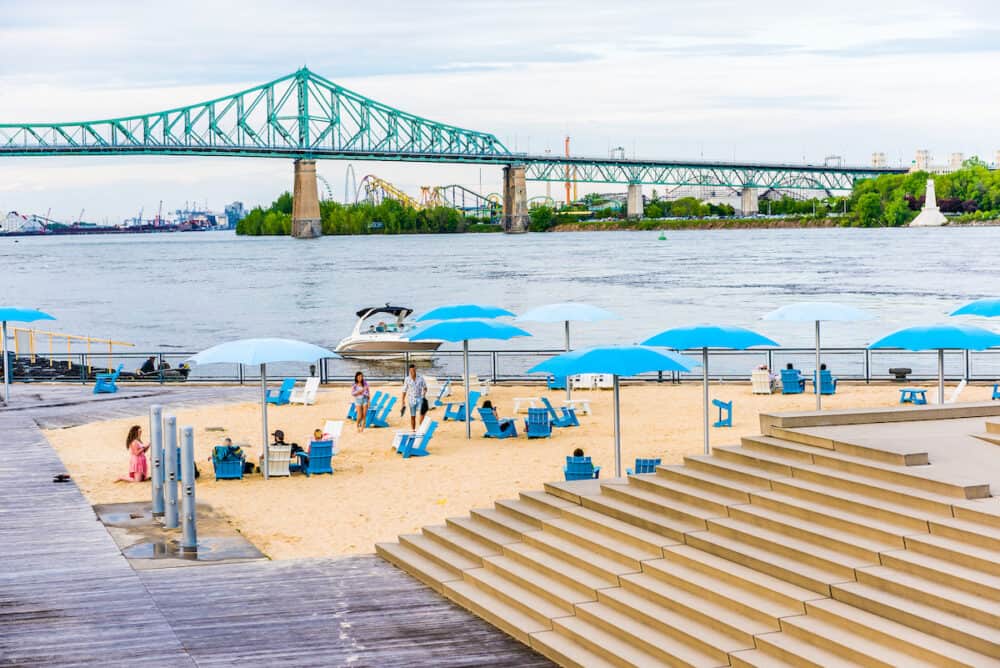
Street Art
Next up, you’ll channel your inner Picaso and critique Montreal’s street art. One of the most prominent forms of street art in Montreal is murals. The city is adorned with large-scale, visually striking murals that can be found throughout various neighborhoods.
Many of these murals are created by local and international artists who are invited to participate in street art festivals and public art initiatives.
Murals often depict a range of subjects, including cultural icons, social issues, historical events, and abstract designs, contributing to the city’s visual landscape. If you were to create a mural, what would you create?
The Mile End neighborhood is particularly renowned for its street art scene. The area attracts numerous talented artists who use the neighborhood’s walls and facades as their canvas.
The streets of Mile End are filled with an ever-changing display of colorful and thought-provoking murals, creating a dynamic outdoor gallery.
MURAL Festival, held annually in the summer, transforms the city into an open-air museum, inviting renowned street artists to create large-scale murals in various locations.
Under Pressure, another notable event, focuses on graffiti and hip-hop culture, bringing artists together for live painting, graffiti battles, and performances.
Montreal has designated certain areas as legal walls or street art zones, where artists are encouraged to create freely without the fear of legal repercussions.
These spaces provide a platform for emerging artists to showcase their work and contribute to the city’s street art scene. Some popular locations include the MURAL Festival‘s main site, the Saint-Laurent Boulevard, and the Mont-Royal Avenue.
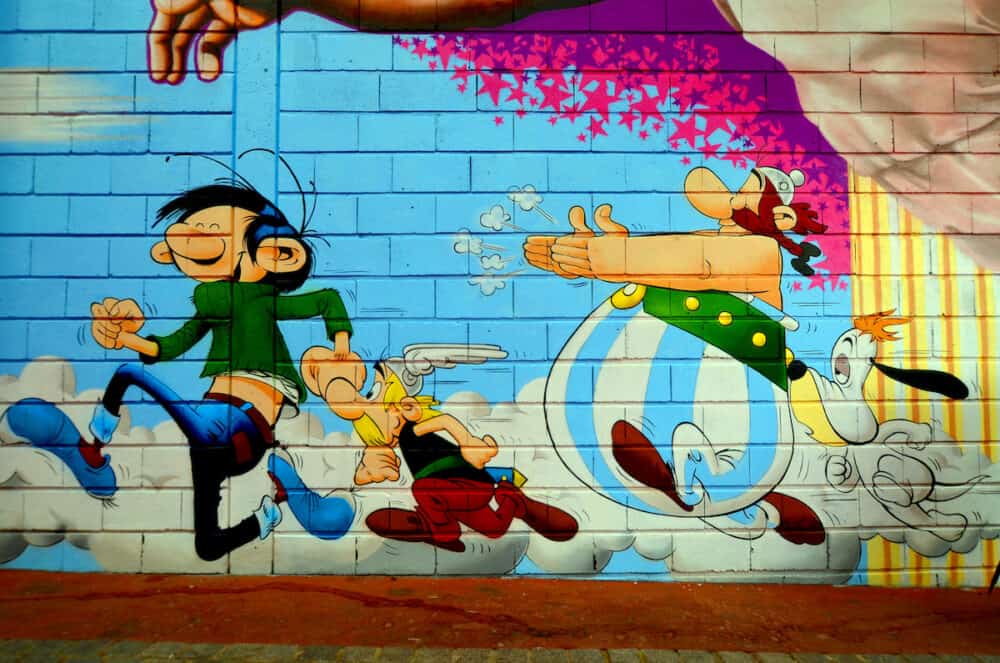
Downtown Montreal
End off your day in Downtown Montreal, back in the middle of the city. You’ve done a full circle of Montreal’s attractions today.
As the central business district and a major cultural and entertainment hub, Downtown Montreal offers a dynamic mix of shopping, dining, nightlife, and cultural attractions. Here’s what you can expect to see:
Downtown Montreal is a shopper’s paradise, with a plethora of retail options. Rue Sainte-Catherine, one of the city’s main shopping streets, is lined with department stores, luxury boutiques, international chains, and local shops.
Underground City (La Ville Souterraine), an extensive network of underground shopping malls and pedestrian corridors, offers a unique shopping experience, especially during the winter months. You’re bound to find something that catches your eye above or below ground.
Downtown Montreal boasts several iconic cultural landmarks. Place des Arts, located in the Quartier des Spectacles, is the city’s premier performing arts complex, hosting concerts, theater productions, and festivals.
The Montreal Museum of Fine Arts, one of the largest art museums in Canada, showcases a vast collection of artwork spanning various periods and styles.
The McCord Museum and the Musée d’Art Contemporain de Montréal are also located downtown, offering exhibitions on history, culture, and contemporary art. You won’t be able to see them all, so pick your favorite and go for it.
After all that walking, take a break in one of the several public spaces that provide respite from the city.
Places like the Dorchester Square, Place Ville-Marie, and the Victoria Square offer green spaces, fountains, and seating areas where locals and visitors can relax, have a picnic, or enjoy the outdoors. These spaces also serve as venues for outdoor concerts, art installations, and public gatherings.
Downtown Montreal is synonymous with entertainment and nightlife. The Quartier des Spectacles is a vibrant cultural district that hosts numerous festivals, concerts, and outdoor events throughout the year.
The area comes alive with live music, street performances, and art installations. Additionally, downtown Montreal features a wide range of bars, clubs, and theaters that cater to diverse tastes and preferences, ensuring a vibrant and energetic nightlife scene.
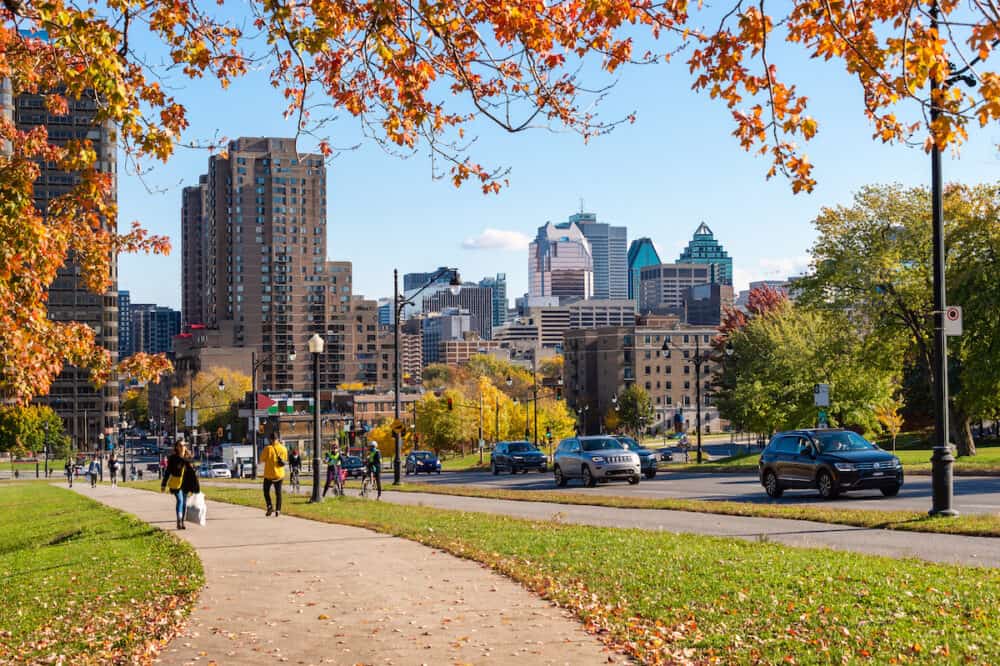
Day 3 in Montreal
Jean-Talon Market
Hungry for more? Or maybe you’re just hungry in general? For brekkie, you’ll stick with local tradition and head to the Jean-Talon Market.
Located in the vibrant neighborhood of Little Italy, the Jean-Talon Market is not only a popular destination for fresh produce and local goods but also a fantastic place to enjoy a delicious breakfast.
The market offers an array of options to satisfy your breakfast cravings. You can find fresh fruits, pastries, artisanal bread, local cheeses, and a variety of other breakfast staples.
Many vendors at the market also offer ready-to-eat breakfast items such as crepes, croissants, bagels, and traditional Quebecois treats like tourtière or maple syrup-infused dishes.
What sets the Jean-Talon Market apart is its lively and bustling atmosphere. The market is a hub of activity with colorful stalls, friendly vendors, and a vibrant energy. It’s a perfect place to soak in the local culture, savor the flavors of Montreal, and start your day off on a delicious note.
Additionally, the market is surrounded by charming cafes and eateries where you can sit down and enjoy your breakfast in a relaxed setting. Many of these establishments source their ingredients directly from the market, ensuring fresh and flavorful meals.
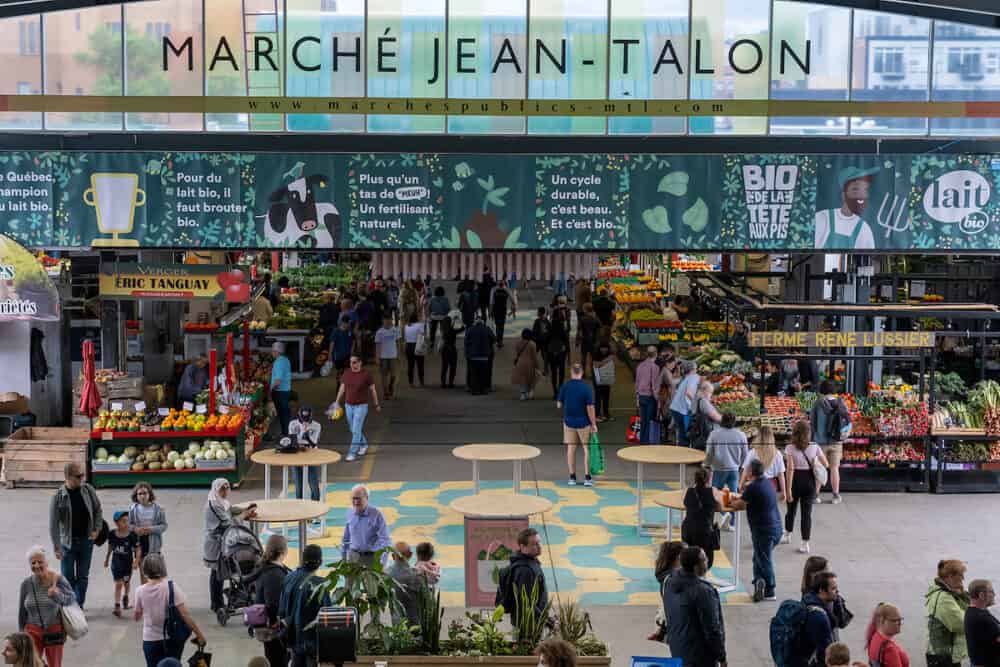
Montreal Museums
Now that your brain has been fed with fuel, you can put it to good use at one of Montreal’s multiple museums – Now that’s a tongue twister.
The Montreal Museum of Fine Arts is one of the largest art museums in Canada and a cultural landmark in the city. It houses an extensive collection of over 44,000 works of art, spanning various periods and styles, including paintings, sculptures, decorative arts, photography, and installations.
Located in the historic district of Old Montreal, Pointe-à-Callière is an archaeological museum that explores the history and heritage of Montreal. The museum showcases archaeological remains of the city’s earliest settlements, including an underground archaeological site that allows visitors to walk through layers of history.
The McCord Museum focuses on Canadian history, culture, and photography. Its collection includes over 1.5 million objects, photographs, and documents that illustrate the social, cultural, and artistic aspects of Canada.
The Montreal Science Centre is an interactive museum that engages visitors with hands-on exhibits and scientific discoveries. The museum covers a wide range of scientific disciplines, including biology, chemistry, physics, and technology.
Housed in the iconic geodesic dome designed by Buckminster Fuller, the Biosphere Environment Museum focuses on environmental issues and sustainable development. The museum explores topics such as climate change, biodiversity, water ecosystems, and environmental solutions.
Located in Old Montreal, the Château Ramezay is a historic building that serves as a museum and cultural center. The museum explores the history and heritage of Montreal through exhibitions, artifacts, and multimedia presentations.
So that was a lot, let’s move onto something a little less mind-consuming and a little more action packed.
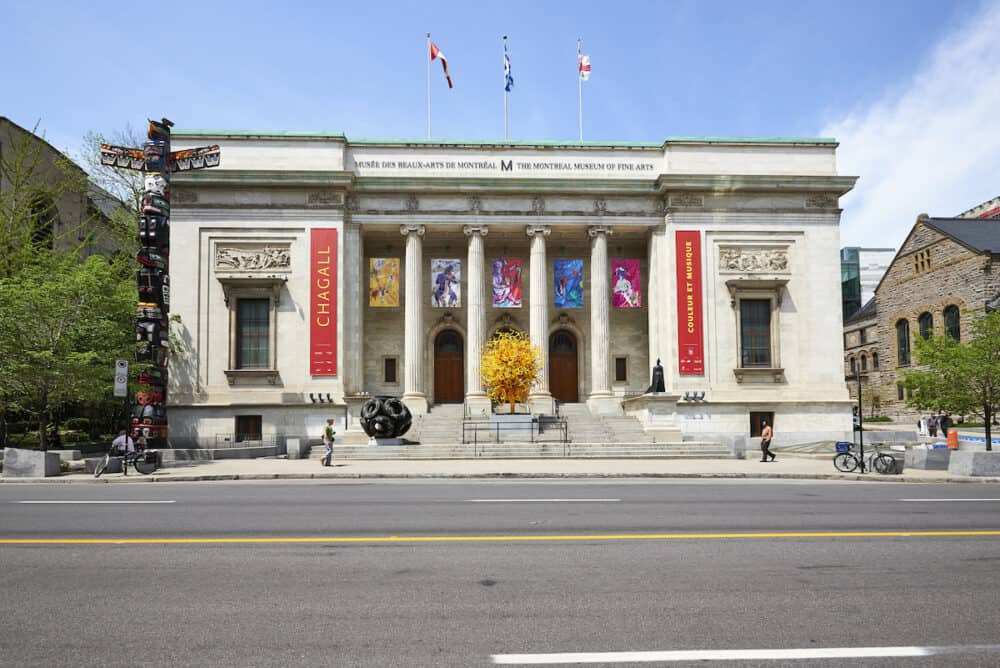
The Underground City
The Underground City is a vast network of interconnected underground tunnels, walkways, shopping malls, and office complexes that span over 32 kilometers (20 miles) in downtown Montreal. It’s the largest underground complex in the world and serves as a unique attraction in the city.
This underground labyrinth provides a convenient and sheltered way to navigate downtown, especially during the colder months when Montreal experiences harsh winters.
The Underground City is not just a practical means of transportation but also a vibrant destination with a wide range of shops, boutiques, restaurants, cafes, and entertainment venues.
You can embark on a fascinating underground adventure by exploring the various levels and corridors, discovering hidden gems, and indulging in shopping sprees.
From trendy fashion boutiques and specialty stores to gourmet food markets and international cuisine, the Underground City offers a diverse and exciting shopping and dining experience.
Additionally, the Underground City is home to numerous cultural and entertainment venues. You can catch a movie at one of the cinemas, attend a concert or theater performance, or explore art galleries and exhibitions.
The complex often hosts events, exhibitions, and festivals, adding a dynamic and lively atmosphere to the underground environment.
Exploring the Underground City is like discovering a city beneath the city. It provides a fascinating perspective on urban planning, architecture, and the integration of public spaces.
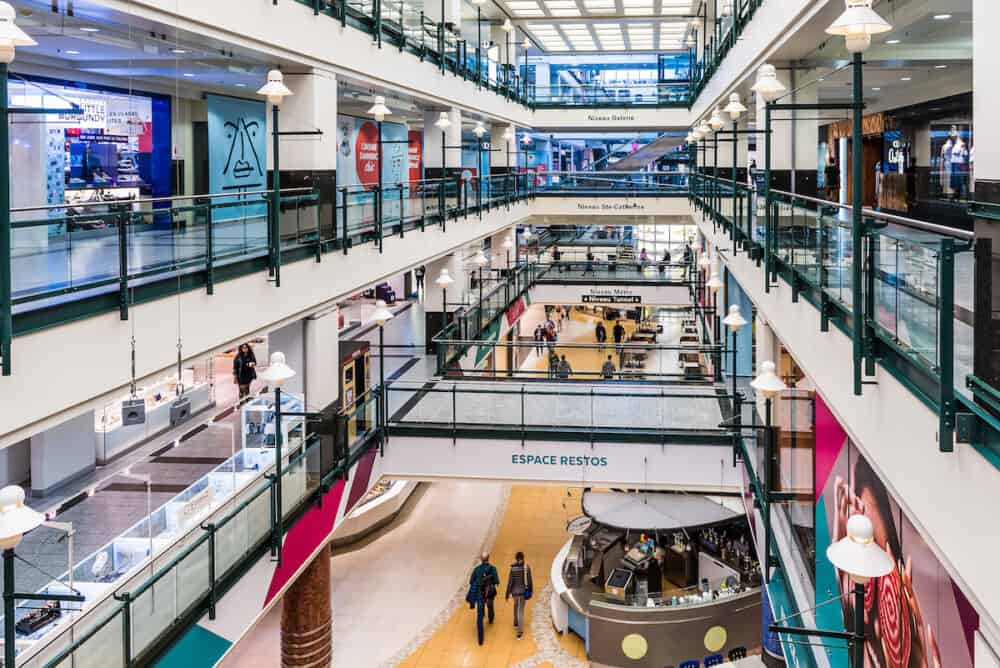
The Lachine Canal
To end off your last day in Montreal, take a relaxing stroll along the picturesque Lachine Canal.
The Lachine Canal is a historic waterway that stretches for about 14.5 kilometers (9 miles) from the Old Port of Montreal to Lake Saint-Louis.
The canal played a crucial role in Montreal’s industrial development and is now a recreational hotspot that offers beautiful scenery and a tranquil atmosphere.
Start your walk at the Old Port, where you can enjoy views of the St. Lawrence River and the historic buildings that line the waterfront. As you make your way along the canal, you’ll pass by charming neighborhoods and iconic landmarks.
The canal is flanked by a pedestrian and cycling path, making it an ideal spot for an evening meander. You can take in the sights of boats gliding through the water, admire the colorful row houses and converted industrial buildings along the canal banks, and soak up the peaceful ambiance.
Along the way, you’ll find various spots to sit and relax, such as benches, picnic areas, and waterfront parks. Take a moment to unwind and enjoy the serenity of the canal. You can also bring a picnic or grab a snack from one of the nearby cafés or bakeries to enjoy by the water.
As the sun begins to set, the Lachine Canal offers a lovely setting to witness the changing colors of the sky and enjoy the peaceful ambiance of the waterfront.
The illuminated bridges and cityscape add a touch of magic to the scene. Paired with a glass of merlot, the atmosphere makes for a wonderful end to your time in Montreal.
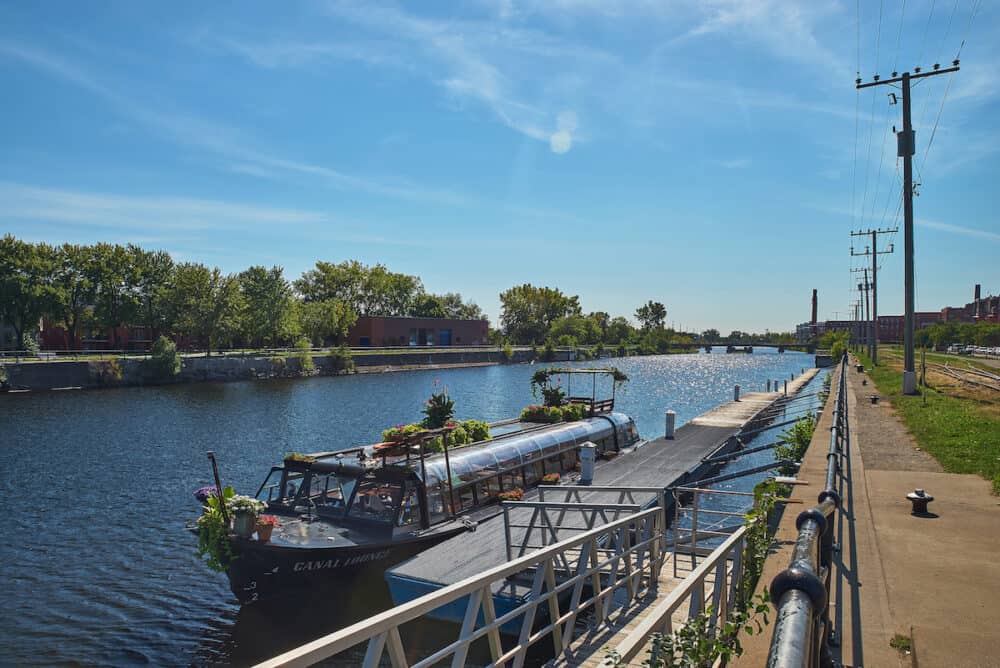
Montreal is an elusive city that has this enticing way of surprising you with something new around every coroner.
Not even this 3 day itinerary could fit everything that Montreal has to offer into one guide. However, you will experience 3 perfect days in Montreal that tick off all your North American and European fantasies within one trip.
It’s no wonder Canada’s iconic symbol is a maple leaf, because things don’t get much sweeter than this.
Recommended tours in Montreal
- History Walking Tour of Old Montreal
- Montreal Walking Food Tour With Secret Food Tours
- Explore Old Montreal – A Small-Group Walking Tour for the Curious
- Beyond the Basilica a Walking Tour in Montreal
- Guided Scooter Sightseeing Tour in Montreal
- Beyond the Market Food Tour in Montreal
- The Original Montreal Mural Arts Tour
- Montreal Bagel Making Workshop
- Full-Day City Tour Montreal with Pickup and Local Specialties Tasting
- Old Montreal Walking Tour
- Helicopter Tour Over Montreal
- Winter Tour of Old Montreal – A Small-Group Walking Tour for the Curious
Read more:
If you’d like to save it for later, please save it to Pinterest.
